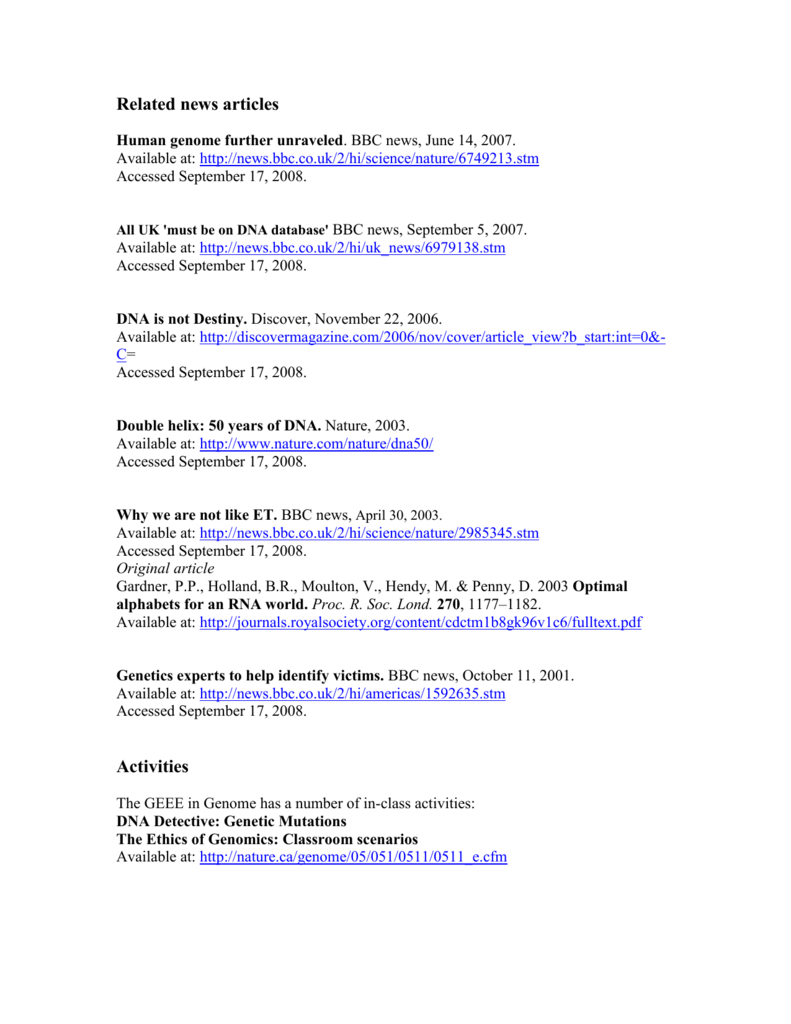Gardner Genetics Pdf

TOC Genetics overview Chromosomal conditions Prenatal screening and diagnostic options Rare autosomal trisomies Single gene inheritance Gardner RJM, Sutherland GR, Schaffer LG. Chromosome Abnormalities and Genetic Counseling. New York, NY: Oxford University Press; 2012. Humans have 23 pairs of chromosomes (for a total of 46 chromosomes).
Advances in genetics are continually being made, and Human Genetics provides an overview of up to date practice within this field. It reviews the basics of DNA, different modes of inheritance and gene function. This volume takes the reader through the different techniques used in both molecular genetics and cytogenetic laboratories, concluding with the clinical aspects of genetics. All aspects are clearly explained using diagrams and photographs to achieve clarity and promote understanding.
This book acts as a good reference and revision guide for those working in the genetics field or for those new to genetics. It would also be useful to undergraduates in biomedical sciences, providing a quick reference guide to complement other text books in the field of genetics, which individually study the different areas outlined in Human Genetics in more detail.
Human Genetics is easily navigated with clear chapters broken down into individual sections. It allows the reader to dip in and out of the book as required, yet at the same time, ensures that each area can be studied in more detail. The quick reference guide of conditions at the back of the book will be of particular value for clinicians. It not only gives a brief outline of the clinical aspects of the different conditions, but it also clearly states which laboratory techniques are used in the diagnosis of each condition. This will be invaluable for any clinician requesting testing, but unsure exactly which test is needed, and therefore uncertain as to what sample should be taken from the patient. Although this book provides an overview, it does, however, point the reader in the right direction to find more information on each individual area both through further reading and internet resources.
The chapter on mechanisms of disease may not be new to scientists, but for those working in the clinical field without a strong science background these concepts may be fairly new to them. Human Genetics will aid in their understanding of different conditions, and the reports issued enabling them to translate this in a clear manner to patients.
Throughout the book clear illustrations are used to clarify the techniques described and complement the text. It is particularly helpful to have ‘true to life’ pictures when the authors have described certain techniques, such as raw DNA sequence information as well as some of the cancer genetics techniques. These can only be truly understood by seeing a realistic output of the data to be analysed.

The book is clearly written from a scientific perspective and, although it touches on some of the aspects of clinical genetics, it is important to realise that this is only very brief. This is the weaker side of the book, and so anyone in the clinical field would certainly need to be exploring clinical issues further, particularly in relation to complex family issues and the psychosocial aspects of genetic counselling.
This book would be a useful text for those studying biomedical sciences or a Masters course in genetic counselling. Although there is no great depth to the book, and students will need to look elsewhere for more comprehensive texts on particular aspects, it does bring together the laboratory and clinical aspects of genetics. It also traces the path from the original discussion with a patient, through sample extraction to the laboratory techniques as well as exploring the mechanisms underlying the origin of the relevant genetic changes.
Author information
Correspondence to Caroline Kirwan.
Rights and permissions
About this article
Cite this article
Kirwan, C. A. Gardner, T. Davies: Human Genetics, 2nd Edition. Hum Genet128, 563 (2010). https://doi.org/10.1007/s00439-010-0868-6
